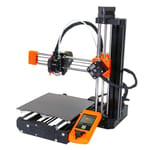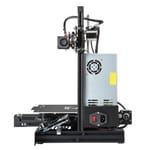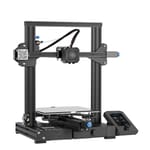Prusa Research and Creality3D both have made a name for themselves in the consumer FDM printing sector over the last years.
Creality became a significant force in the budget 3D printing market since it released the Creality Ender 3, back in 2018, and its upgraded follow-up version the Ender 3 Pro. With its newest iteration, the Ender 3 V2, Creality set’s out again to churn up the budget printing sector.
Prusa, on the other hand, has had tremendous success over the years with its multiple award-winning – but not so inexpensive – Original Prusa MK3S. The Original Prusa Mini, which costs $349, seemed to be Prusa’s attempt to muscle into the budget desktop printing segment dominated by the likes of Creality and other Chinese manufacturers.
Creality’s Ender 3 line is hailed amongst the best budget options, but does the arguably premium-budget Mini have what it takes to topple the competition?
Read on as we take a brief glance at the four contestants and their specs and line them up for a shootout. If you are familiar with the machines, feel free to jump right to the Verdict section.
Original Prusa MINI
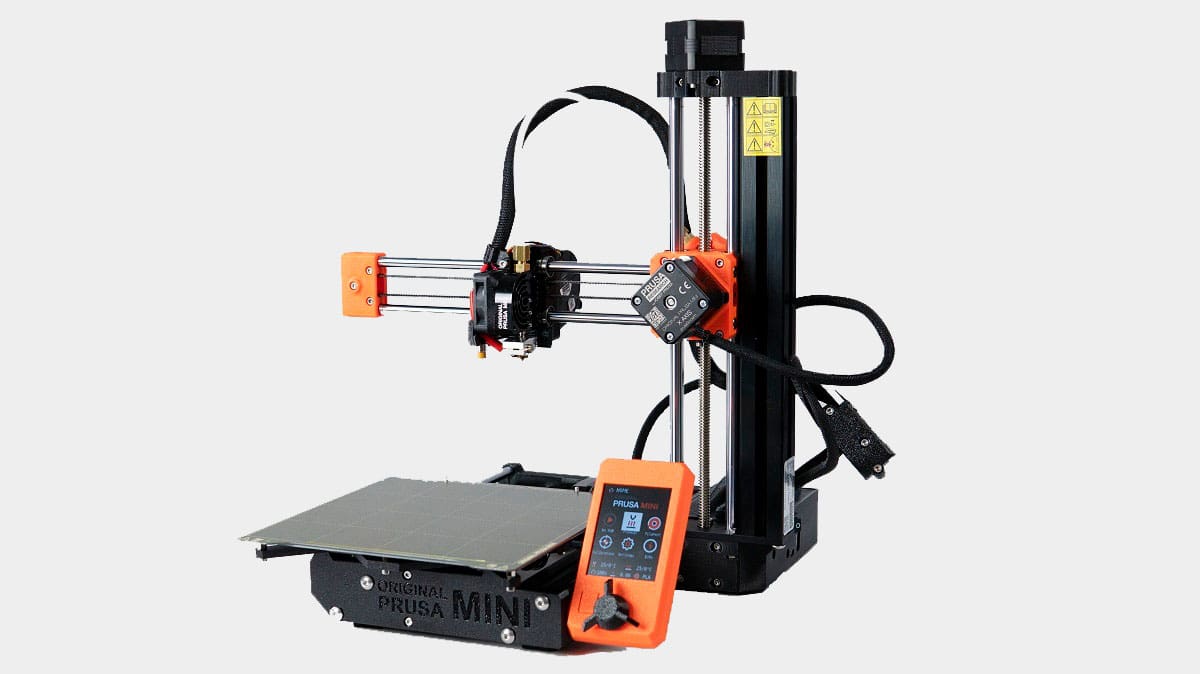
Prusa’s flagship printer, the mid-size FDM Original Prusa i3 MK3S, isn’t going anywhere, but that hasn’t stopped the company from venturing into the unknown budget printing territory, a territory predominantly controlled by Creality and other Chinese manufacturers, with the Original Prusa Mini.
The little brother of the Original Prusa i3 MK3S offers a more affordable starting price point of $349, comes as a self-assembly kit, and features a printing volume of 180 x 180 x 180 mm.
Due to the one-armed frame design of the Mini, Prusa switched from the direct drive system used in its previous FDM printers, to a Bowden system with a 3:1 drive gear ratio. This keeps the extruder light and reduces wobbling.
With a heated magnetic removable print bed capable of temperatures up to 100 °C and an extruder with a 280 °C temperature cap, the Mini can handle PLA, PETG, ASA, ABS, and even flexible filament. The PEI coated plate ensures proper adhesion, as well as easy removal. You can also purchase an optional upgrade for $30 and get a textured powder-coated spring steel sheet too. Another feature that is not present on the stock version but can be upgraded for $20 is a filament sensor.
One thing the Mini adopted from its big brother is mesh bed leveling – moving to predefined points on the bed and determining the nozzle distance. This ensures an almost error-free printing even with a slightly uneven bed.
Instead of the SD card slot you would find on the Ender series, the Original Prusa Mini features a USB slot, LAN, and an optional future WiFi module upgrade. The 2.8-inch color display is controlled using the one-click control wheel and allows you to preview the print models.
En par with Creality or even above is Prusa’s enormous community of passionate fans who share advice and help each other out should you need it.
While the Build volume of 180 x 180 x 180 mm might sound prohibitive at first, it is actually good enough for the everyday-prints. If something is too big, you can always cut the model up into manageable sizes.
Overall, the Mini provides the user with the typical ease-of-use feeling you expect from an Original Prusa printer while dropping significantly in price and size compared to the MK3S.
So how does it compare two the budget competitors? We’ll answer this question in the following verdict section.
Printing Properties
- Technology: Fused deposition modeling (FDM)
- Build volume: 180 x 180 x 180 mm
- Min. Layer Height: 50 microns
- Nozzle size: 0.4 mm
- Max. print temperature: 280 ℃
- Max. print bed temperature: 100 °C
- Filament Diameter: 1.75 mm
- Connectivity: USB, (future) optional WiFi-upgrade
- Bed leveling: Automatic

Learn more
Creality Ender 3
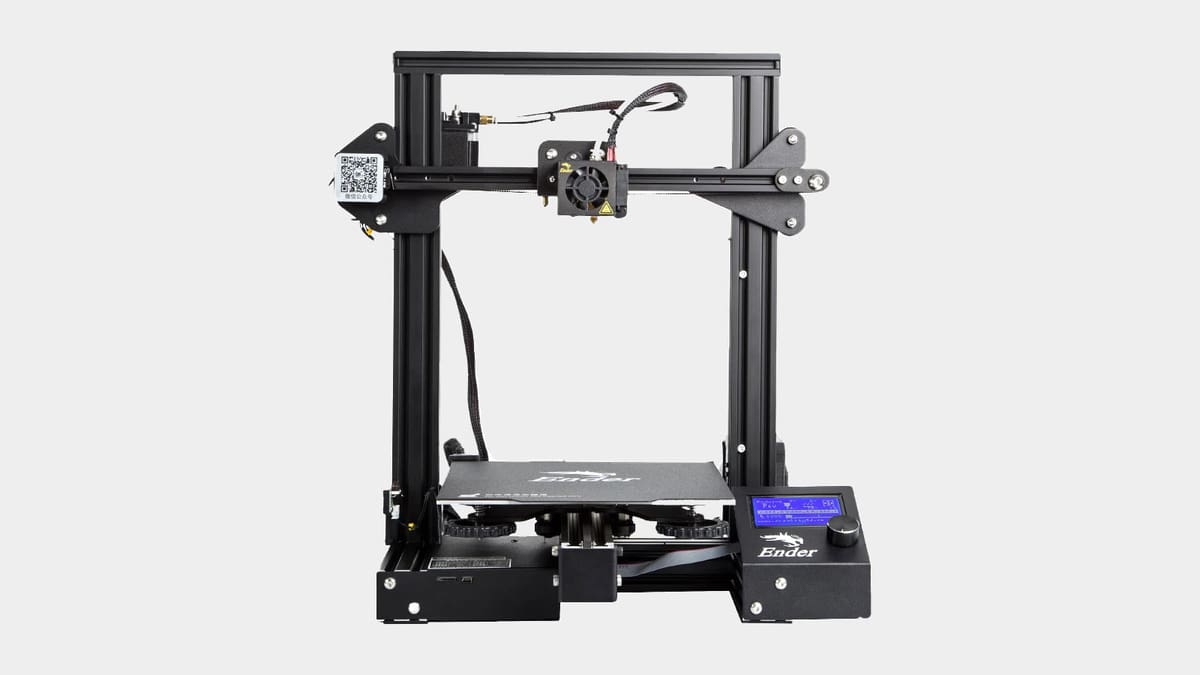
The Creality Ender 3 was initially released in 2018 and has ever since enjoyed great popularity amongst tinkerers on a budget. With a sub $200 price tag, the printer offers several features that still make it one of the most popular machines currently on the market and a long time winner of our Best 3D Printers budget category.
With a build volume of 220 x 220 x 250 mm, a BuildTak-like heated build plate, and a tight filament pathway, the printer poses a decent out of the box printing experience and manages to print successfully with PLA, ABS filament, and even the trickier ones like PETG or flexibles.
The Ender 3 comes semi-assembled and requires manual calibration. If calibrated correctly, the Ender 3 can compete – print quality-wise – with printers more than double or triple its price.
Another plus point is the printer’s open-source software, with many customizations and add-ons coming directly from the massive printer community itself, as well as its modifiability. There are numerous upgrades from buying a tempered glass print bed, basically Creality’s take on the famous Anycubic Ultrabase, to various 3D printed add-ons.
The most significant drawbacks are the printer’s marginally uneven base, causing the printer to wobble slightly, and its somewhat flimsy bed that needs to be releveled from time to time. While Creality addressed the base problem for its Pro version, the Ender 3 is still a great example of everything that a budget 3D printer should be.
Admittedly, most of the features that set the Ender 3 apart from other budget printers upon its release have been caught up by other manufacturers, making the printer really not that exciting anymore. But as one of the most affordable and most adopted desktop 3D printers going, it is to this date a worthwhile investment and an excellent option for beginners and makers on a budget.
So how does it compare to its follow-up iterations and the Prusa Mini? We’ll answer this question in the verdict section.
Printing Properties
- Technology: Fused deposition modeling (FDM)
- Build volume: 220 x 220 x 250 mm
- Min. Layer Height: 100 microns
- Print precision: +/-0.1 mm
- Nozzle size: 0.4 mm
- Max. print temperature: 260 ℃
- Max. print bed temperature: 100 °C
- Recommended print speed: 40-80 mm/s
- Filament Diameter: 1.75 mm
- Connectivity: SD Card, USB
- Bed leveling: Manual

Learn more
Creality Ender 3 Pro
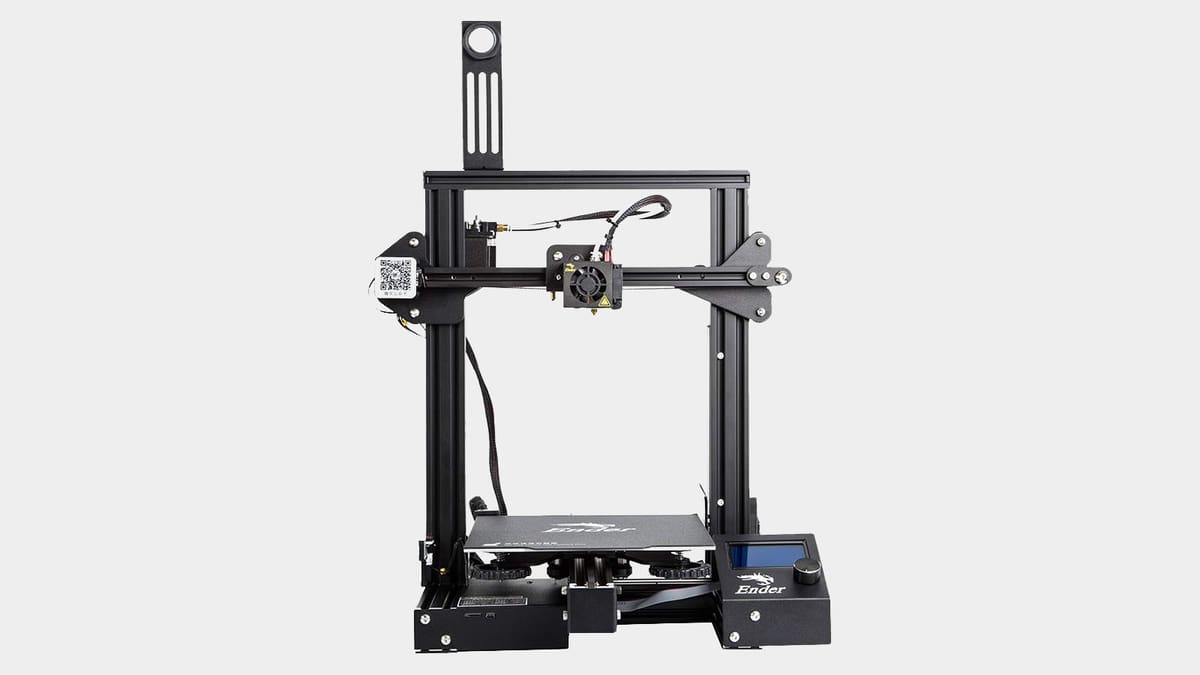
The Ender 3 Pro is Creality’s follow up iteration and another long term title holder in our Best 3D Printers Buyers Guide sub-$300 category. Just like its predecessor, it is – considering its price – and exceptional printer. But, truth be told, there isn’t much separating the Creality Ender 3 Pro from its popular predecessor except a handful of upgrades. Though not changing much of the printer’s appearance, they do, however, iron out some of the problems the Ender 3 faced.
For starters, one of the biggest upgrades is the buffed up Y-axis, now featuring a 40 x 40 mm aluminum extrusion adding more stability and rigidity to the printer.
Literally on top of the improved axis, the Ender 3 Pro has a magnetic removable print bed, which makes popping prints off much easier.
The Pro version also features an upgraded Mean Well Power Supply Unit (PSU), which is smaller, quieter, and more reliable than the version featured on the original Ender 3, alongside new bearing wheels, improved fan positioning, and a better extruder.
Otherwise, the Creality Ender 3 Pro has the same build volume, design, and overall functionalities as the original Ender 3. And, as with the Ender 3, the enormous community offers countless tips, tricks, upgrades, and hacks to modify the 3D printer to your personal needs.
So, is it worth shelling out a few extra bucks for the Pro, and how does it fare against the new Ender 3 V2 and Prusa Mini? We’ll answer this question in the verdict section.
Printing Properties
- Technology: Fused deposition modeling (FDM)
- Build volume: 220 x 220 x 250 mm
- Min. Layer Height: 100 microns
- Print precision: +/-0.1 mm
- Nozzle size: 0.4 mm
- Max. print temperature: 260 ℃
- Max. print bed temperature: 100 °C
- Recommended print speed: 40-80 mm/s
- Filament Diameter: 1.75 mm
- Connectivity: SD Card, USB
- Bed leveling: Manual

Learn more
Creality Ender 3 V2
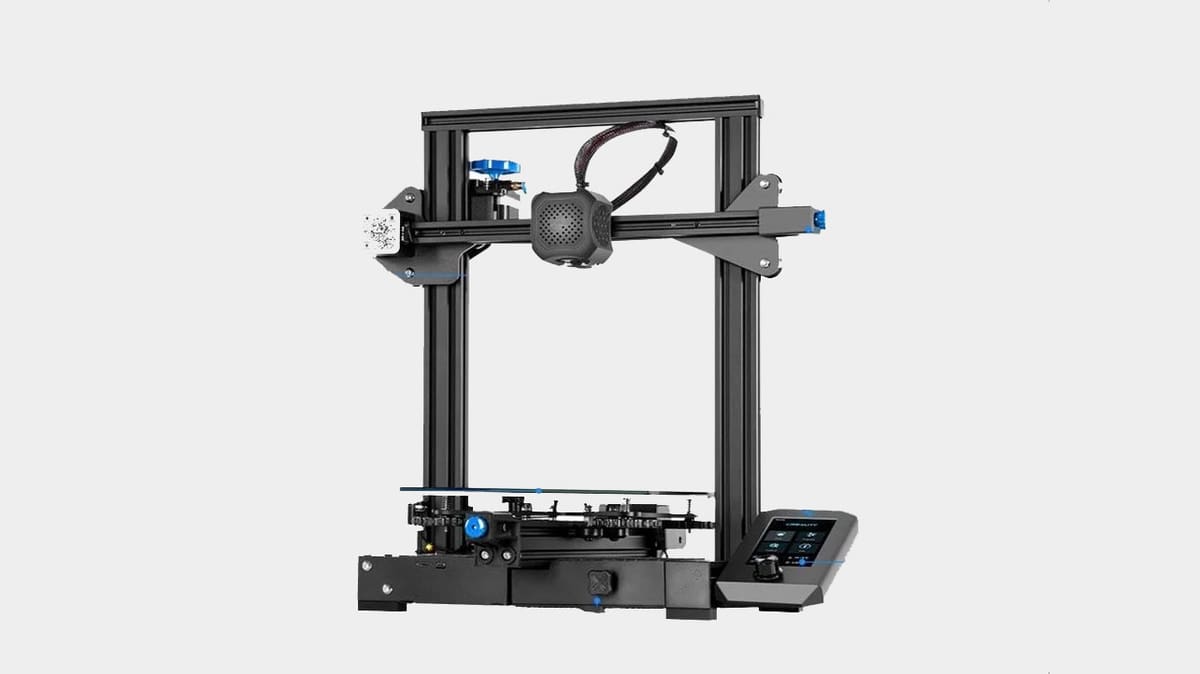
This brings us all to the latest (and possibly greatest?) of Creality’s Ender 3 iterations: the Ender 3 V2. While it’s hard to definitively say whether it’s the best (or worst) of the options – the printer hasn’t been released yet, though it is available for pre-order ($269), and we’ll have to wait to get our hands on it and review it – we can make some educated guesses based on the specs and details Creality has released so far.
Like its forbears, the Ender 3 V2 has a print volume of 220 x 220 x 250 mm and can process PLA, ABS, TPU, and PETG.
But, there are some essential upgrades, namely, the tempered carborundum glass bed, perhaps the most notable of all the new features. This is a welcome change from the detachable magnetic heated bed of the Ender 3 Pro, not to mention the bed on the Ender 3. These beds were prone to accumulate filament residue over time, which ever so often resulted in ugly first layers. The glass print bed should improve overall material adhesion, makes the surface flatter, and lets you remove prints much more easily.
The V2 boasts an upgraded, 32-bit, self-developed, “silent” motherboard. Creality says it prints at 50 decibels, which is comparable to a quiet suburb or a conversation at home. It also has a brand name MeanWell power supply to heat up quickly and a fancy HD color screen instead of the old, cheap one (but the screen is still navigated by a rotary knob).
Some other upgrades and tweaks are a toolbox embedded in the base of the printer, where you can store things like nozzles, needles, pliers, and other tools, plus the capability to resume a print after a power outage.
Lastly, Creality added in two adjustable tensioners on the X- and Y-axis to try and prolong the belt’s lifespan, and they added in a rotary knob to the Bowden extruder to manually load filament if desired.
So with the new upgrades, but also the uptick in price, can the Ender 3 V2 outshines its little brothers and even take on the Original Prusa Mini? We’ll answer this question in the verdict section.
Printing Properties
-
- Technology: Fused deposition modeling (FDM)
- Build volume: 220 x 220 x 250 mm
- Min. Layer Height: 100 microns
- Print precision: +/-0.1 mm
- Nozzle size: 0.4 mm
- Max. print temperature: 255 ℃
- Max. print bed temperature: 100 °C
- Recommended print speed: –
- Filament Diameter: 1.75 mm
- Connectivity: SD card
- Bed leveling: Manual

Learn more
Verdict
If you are swaying between the stock Ender 3, the improved Ender 3 Pro or Ender 3 V2, and the Original Prusa Mini, the best choice will primarily depend on your 3D printing needs.
Let’s start by facing off the three brothers and then compare them to the smallest but most expensive of the trio, the Original Prusa Mini.
Ender vs. Ender vs. Ender
We’ve already broken down the differences between the Creality Ender 3 and Ender 3 Pro and took a glimpse at what the Ender 3 V2 might have in store for us, but now comes the pertinent question: is it worth spending more on the Pro version or even wait for the V2 to be released?
The answer to this question ultimately depends on what the user is looking for, but we’d say in most cases, the original Creality Ender 3 offers the best bang for your buck.
Why, do you ask? First of all, all three machines are capable of printing the same materials, where they differ is the ease of printing with them. And, if you already have an Ender 3, you can always upgrade your existing machine to have these same features as the Ender 3 Pro or even the V2 version.
Granted, not everyone wants to or can tinker away at their printer and might prefer the out-of-the-box upgraded Ender 3 V2 over the stock version. Still, since the machine has yet to be released and – most importantly – put through a real-life stress test, it is hard to classify.
But at least for the Ender 3 and Ender 3 Pro, the print quality was identical since both printers share the same motherboard, stepper drivers and motors, frame, and other components.
Usability
When it comes to usability, the Ender 3 Pro does have a few refinements over its little brother, such as flipping the motherboard upside down for more convenient access to the SD card slot or moving the control box fan to the bottom to reduce the risk of bits and pieces falling in. Plus, the upgraded firmware unlocks extra calibration menus such as Z-offset, acceleration, and velocity allowing the user to tune the printer much more easily than on the stock version.
The upgrades on the Ender 3 V2, like the color screen and toolbox, are not to be scorned at, but not a game-changer in terms of print quality, nor its scope of application. The same goes for the tensioners and rotary knob to manually load filament, these are handy features, but since the machine isn’t available yet, it’s tough to say whether they will work as advertised or whether they are even that useful.
That being said, the MeanWell brand power supply and Creality’s 32-bit motherboard on the Ender 3 V2 should give you a quieter and zippier (at least when it comes to waiting for the extruder and print bed to heat up) printing experience.
The Print Surface
Where the three Ender printers differ the most – apart from the buffed up Y-axis on the Pro and by the looks of it also on the V2, which undoubtedly makes the printer more robust and leads to less wobbling during operation – is the print beds.

The magnetic removable print bed on the Ender 3 Pro does a decent job (and yes, you can even heat it above 80 °C for printing with ABS or PETG, contrary to a common myth that the plate will lose its magnetic properties when overheated), though it does have the tendency to not align properly to the metal plate.
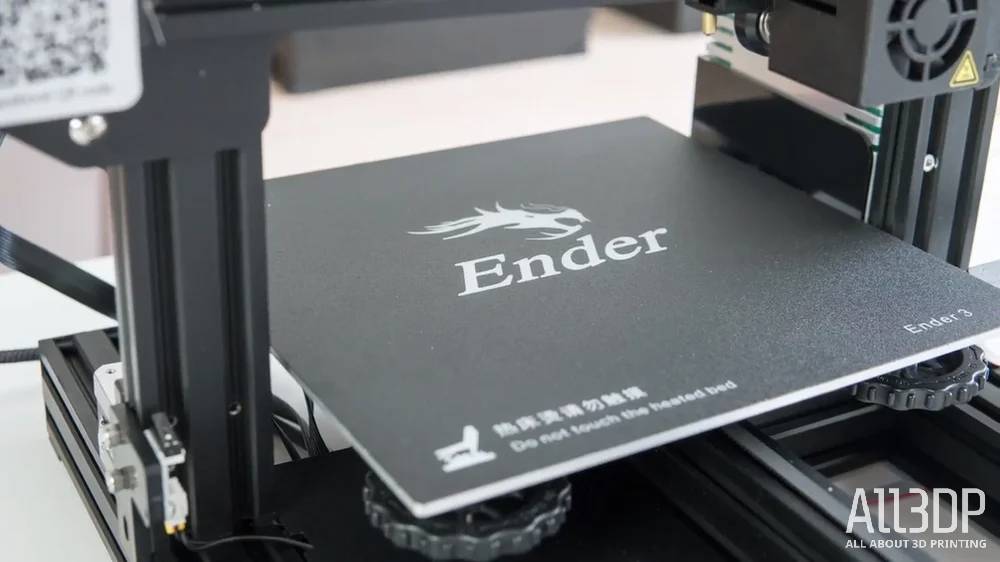
While this can be considered as an upgrade over the stock print surface of the Ender 3, the best way to upgrade the print bed of both the Ender 3 and Ender 3 Pro is – in our experience – to add a tempered glass plate – like the one the Ender 3 V2 features.
Ender Conclusion
So, while the Ender 3 Pro is an excellent printer for its price and does offer certain advantages over the original, the standard Ender 3, cost-wise, is tough to beat. The same goes for the Ender 3 V2. While we welcome an overhauled version and, from the information we can gather from the specs sheet, it looks like Creality did implement some – in our humble opinion – necessary upgrades. However, as the Ender 3 V2 has yet to prove itself in battle, we think, in most cases, you will probably be better off buying a Creality Ender 3 and spending the extra money on your own upgrades if you are willing to tinker with the machine yourself.
Add the Prusa Mini to the Mix
That being said, how does the Ender line hold up against the Original Prusa Mini? Since the Original Prusa Mini is almost twice as expensive as the Creality Ender 3, does that make it better by default? Let’s break it down.
Well, first and foremost, for the $349, you will get that much-heralded Prusa quality. Prusa printers typically pride themselves with being complete machines, and rightly so. While you can upgrade the Mini, there is really no need for it. It has all the bells and whistles and requires minimal tinkering.
Quality Parts
Take the automatic bed leveling for one thing. While all three Enders rely on manual leveling, this tedious task becomes a stroll in the park on the Prusa Mini. Plus, the removable metal build plate on the Mini is implemented better, as it snap-fits on the bed and makes popping prints off a cinch. At least compared to the Ender 3 and Ender 3 Pro version, this is a considerable perk, and in our opinion, not even the tempered glass print bed on the Ender 3 V2 could give it a run for its money.

To juxtapose the control panels, the older Ender versions do come off a bit long in the tooth compared to the neat 2-8-inch color LCD screen on the Original Prusa Mini or the newly developed color screen and interface of the Ender 3 V2. The Prusa Mini does feature a print preview function, which is neat to have when you lose oversight of some of those pesky file names. The Ender 3 V2’s firmware does not seem to allow such a function. Both printers lack a touch interface, though, and are controlled by a click-wheel.
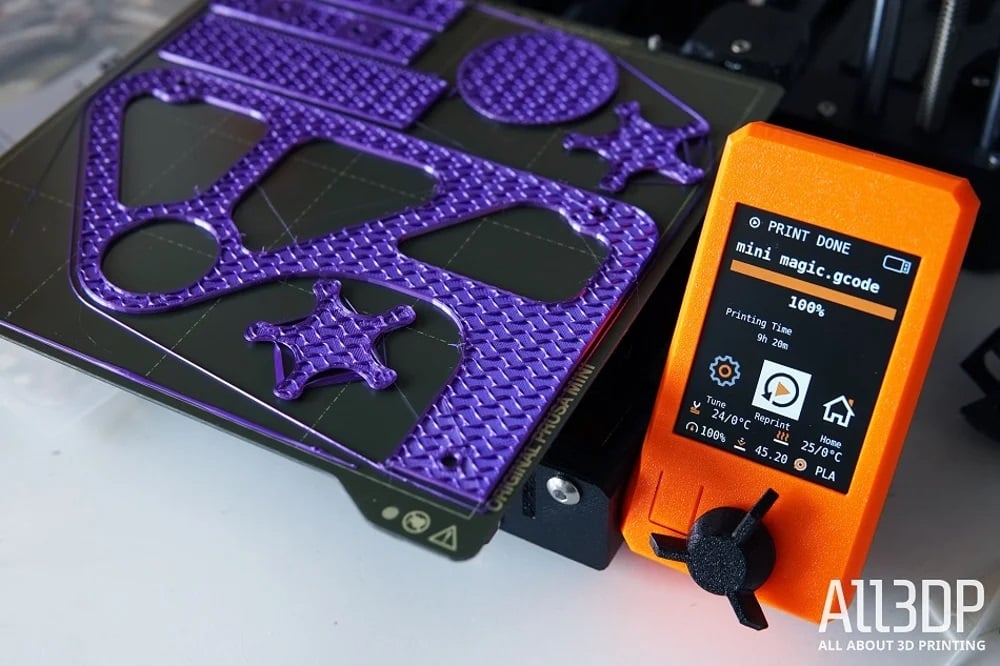
All alike, the Ender series and the Mini, have sturdy builds, even though the Mini might not look like it at first glance with its freely suspended X-axis. But it’s the Ender 3 series that – historically – needs tightening of nuts and bolts, rollers, or the PTFE tube every now and then to achieve the best printing results.
Print Volumes
That’s all very well, but how do the print volumes compare? The Enders share the same generously sized 220 x 220 x 250 mm volume, putting it more in league with the Mini’s bigger brother the Prusa i3 MK3S (250 x 210 200 mm). In comparison, the 180 x 180 x 180 mm on the Prusa Mini comes off a bit measly. While there are smaller print volume sized printers on the market, the 220 x 220 x 250 mm volume has become somewhat the minimum standard on many printers across the product range.
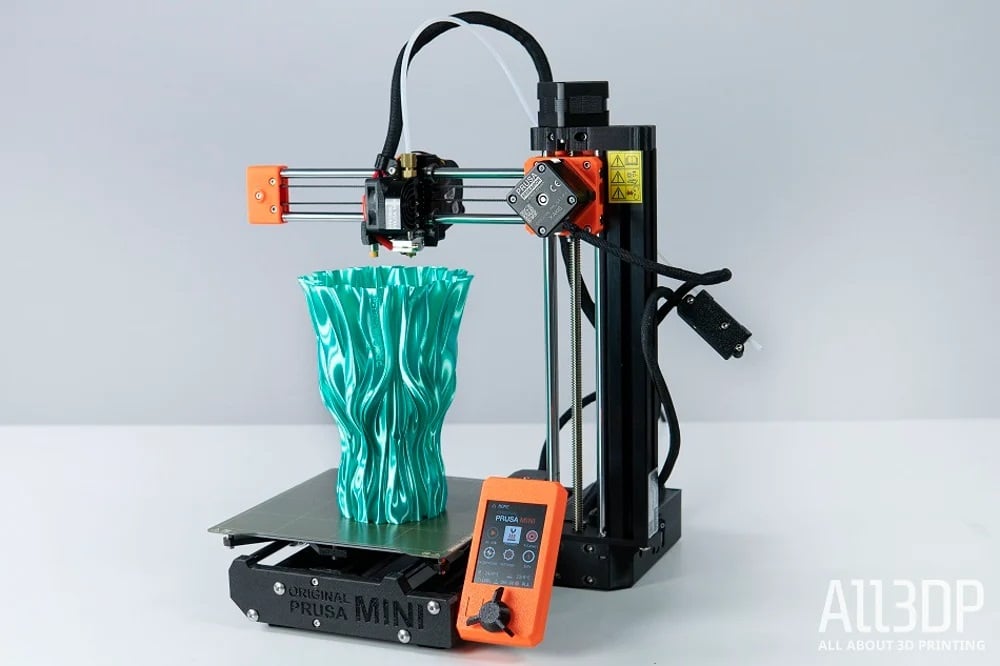
But surprisingly, most of the day-in-day-out prints fit perfectly on the small build plate, and if something is too big, you can always cut the model up into different parts. But it’s undeniable that having 40 mm extra space on the X- and Y-axis and even 70 mm plus on the Z-axis opens up the printing possibilities by a lot.
The Verdict
To reach an ultimate conclusion between the Original Prusa Mini and the Creality Ender series, it really comes down to your personal liking.
If you want a printer that works with a high success rate and doesn’t require all kinds off tinkering and upgrading, the Prusa Mini might be the printer for you. This printer is a solid first entry to the world of Prusa if you’re not quite ready to pay the cash for an MK3S. (If you have the budget though, we’d still recommend the MK3S over the Mini).
On the other hand, it’s always good for beginners to get a solid understanding of the process, mechanics, and tuning of a 3D printer, which the Ender 3 (series) is great for. Yes, there is more tinkering involved, but you can really mod the printer to your liking. Plus, the price is just unbeatable. The Original Prusa Mini is advertised as the ideal print farm printer, but for its price tag, you could get two stock Ender 3’s, giving you a headstart on the printing fam fleet if you so desire.
When you weigh up the price, performance, reliability, and overall product for both contestants, they each make an excellent choice.
License: The text of "Original Prusa Mini vs Ender 3 (Pro/V2): The Differences" by All3DP is licensed under a Creative Commons Attribution 4.0 International License.
CERTAIN CONTENT THAT APPEARS ON THIS SITE COMES FROM AMAZON. THIS CONTENT IS PROVIDED ‘AS IS’ AND IS SUBJECT TO CHANGE OR REMOVAL AT ANY TIME.
